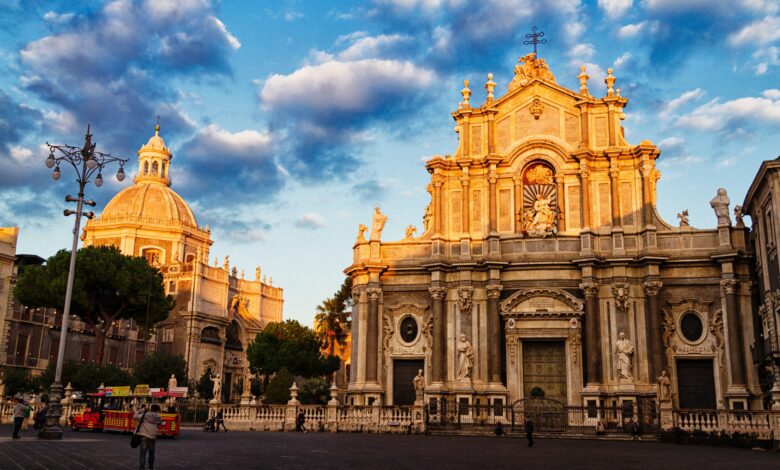
Catania is a city that combines history, architectural beauty, and fun. Founded in 729 BC, Catania has been influenced by many cultures, including Greek, Roman, and Norman. This cultural melting pot is reflected in the city, which is famous for its unique Sicilian Baroque, which can be seen in its most important monuments.
The Cathedral of Catania, located in Cathedral Square, is one of the city’s symbols and an example of Sicilian Baroque. The elephant statue in Cathedral Square, which gave its name to the square, is another important tourist attraction. The Massimo Theater, inaugurated in 1890, is another building of great historical and architectural significance.
Via Etnea is one of the most important streets in Catania, famous for its shops, restaurants, and nightlife. Castel Ursino, built in 1239, is another example of the city’s Norman architecture.
The Catania fish market is a unique experience that shouldn’t be missed. Here you can find a wide range of fresh fish and seafood and immerse yourself in the lively atmosphere of the market.
Nightlife in Catania is lively and fun, with many options for entertainment, from bars to night clubs. The city is also close to the Ciclops coastline, an unspoiled coastal area with wonderful beaches and breathtaking natural landscapes.
As an interesting curiosity, the city has been struck by numerous earthquakes and eruptions, including the eruption of Mount Etna in 1669, which destroyed much of the city. However, Catania has always been rebuilt and reborn from its ashes, becoming a resilient and vibrant city.
Foto di Samir Kharrat su Unsplash






